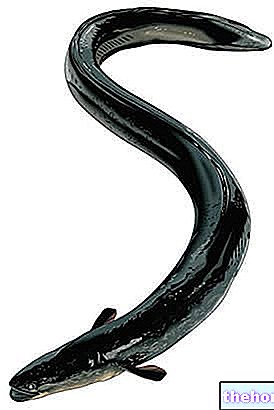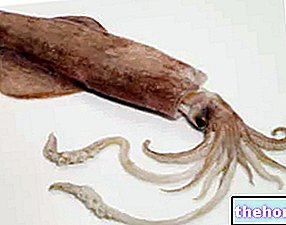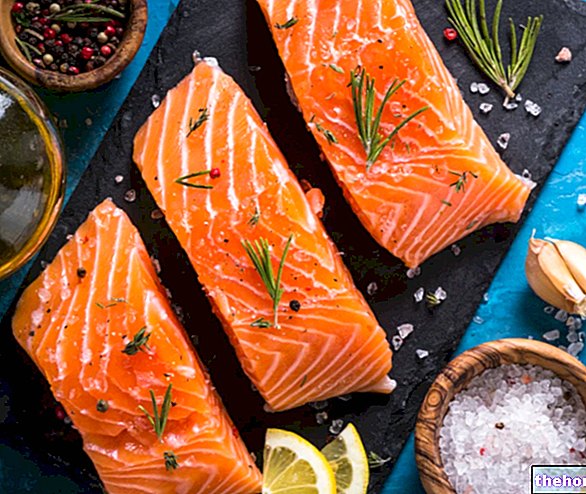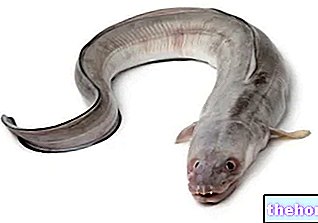Generality
Crabs are aquatic animal organisms; belong to the Subphilum dei Crustaceans, to the "Order of Decapoda, to the Suborder of Pleocyemata and to the "Infraorder of Brachyura.

From the morphological point of view, the crabs make use of a robust armor (better called carapace, which covers both the body and the limbs), two frontal claws (with which it hunts and defends itself) and eight lateral legs for movement and swimming.
The body of the crabs (also called capothorax) is more or less discoid, with a flattened shape, with the function of containing the organs. The crabs have the mouth, eyes and claws in frontal position, while laterally the legs are articulated and posteriorly - folded and embedded in the body - they hide the belly where the eggs develop.
Crabs are on average omnivorous and feed on fresh algae, small echinoderms, sea anemones and organic debris of all kinds; they have scavenging habits.
Crabs represent a decidedly heterogeneous group (Infraorder) and, to classify them in an orderly manner, it would be appropriate to differentiate 5 superfamilies: Dromiacea, Raninoida, Cyclodorippoidea, Ebrachyura And Thoracostremata. However, this kind of subdivision embraces numerous species not used for human nutrition, therefore only the crabs most used in the customary diet will be considered below.
Edible crabs from Italy
Numerous species of crabs live in Italy. Contrary to what many think, crabs do NOT live only in salt water, but it is true that (in our country) it exists only one species of fresh water.
Edible sea crabs:
- Sand crab, woolly crab or hairy; binomial nomenclature: Portunus puber. It is the crab with the most combative character; it is covered with a thin hair, has a reddish brown or mud-gray color, stained with blue, black or red, with small red eyes and two particularly massive and powerful front claws. sand crab reaches 12cm in diameter and is mostly fished in spring and summer, when its meat is tastier. Of the same family (Portunidi), but belonging to different species, are: the Portunus corrugatus or grancella (it frequents the posidonia and sand / mud meadows), the Portunus Holsatus (it frequents the sandy expanses below which it hides) and the Portunus depurator (small, reddish brown in color).
- Crab; binomial nomenclature: Cancer pagurus. It is mainly nocturnal; in adulthood (dimensions that touch 30cm in diameter) it DOES NOT colonize easily accessible bathymetrics and, sinking gradually, can reach bathymetric depths of over 100m. The crab has a particularly squat appearance, with large and powerful claws; contrary to the previous, it is slow, not very aggressive and is totally hairless with a dark orange color, tending to brown.After the spider crab, it is the largest and most delicious crab of our seas.
- Porter crab, sleepy crab; binomial nomenclature: Dromia vulgaris. It is "stockier than the crab and, superficially, it is NOT smooth and clean; it is distinguished by the peculiarity of growing large sponges on the back of the carapace, with which it hides and protects itself. It has habits similar to the crab even if it is more slow, placid and smaller.
- Spider crab, spider crab, spider crab; binomial nomenclature: Maja squinado. It is very similar to a spider by virtue of its long legs and heart-shaped body; it represents the largest crab of the entire category (it can reach 2 kg in weight) and it too, like the crab, has mainly nocturnal habits , while with the advancing of age it tends to migrate towards greater bathymetry.
Edible river crabs
- River crab; binomial nomenclature: Potamon fluviatile. It is greyish-brown in color with yellowish streaks, it reaches a body diameter of 3.5-4.5cm and lives in tunnels at the edges of streams or in pools of fresh water; it has nocturnal habits and is particularly active in spring and autumn. Currently it is an endangered species because it negatively suffers the presence of pollution; its meat, as well as those of the crayfish, are extremely valuable.
Fishing
All crabs are fishery products that can be easily captured, albeit with very different techniques based on the species in question. Freshwater crabs are caught by hand, as are sand crabs and small specimens of crab, porcupine crab and spider crab (all crabs that occupy the coast). On the contrary, the adult crabs of crab and ganseola are trapped with "pots" positioned on high depths, but fortunately these cannot reach 100-150m where the older specimens persist.
Gastronomic notes and nutritional characteristics

Crabs are decidedly delicious crustaceans; those of large dimensions (especially spider crab and crab) are successfully used in the preparation of Catalan or boiled meats, while the smaller crabs (sand crab) are a very tasty ingredient for sauces (with or without tomato) of first courses or stews. The only waste portion of the crabs (to be eliminated by husking) is the belly.
NB. To eat the crabs easily, it is essential to have the special pliers useful for breaking the claws; using your own teeth could seriously compromise its integrity!
The crabs have a very high NON-edible ration essentially consisting of the carapace chitinous; this, although not digestible by man, after special industrial processing (alkaline treatment), undergoes the conversion of chitin (polysaccharide) in chitosan, a "dietary" molecule used in the formulation of some slimming supplements. Chitosan is considered a lipid chelator and as such should reduce the intestinal absorption of dietary fats, moderating the amount of energy introduced with food; unfortunately, its application has not shown a noteworthy efficacy.
Crabs represent highly perishable foods. If stored (even in refrigeration) they activate the enzymatic degradation of free amino acids and muscle proteins at an early stage; this favors the onset of the typical ammonia odor.
Obviously, bacterial proliferation accelerates the wasting process and increases the release of ammonium (although the vaguely pungent odor does not always negate the edibility.) The enzymatic degradation can be stopped by cooking or freezing.
Crabs are potentially allergenic foods and their presence in the diet must NOT affect: pregnant women, nurses and children of weaning age.
Unfortunately, there are not many data regarding the nutritional intake of crabs; however, considering the Subphylum they belong to (crustaceans), it is likely that they are characterized by:
- Low energy intake (<100kcal / 100g)
- Remarkable protein intake with high biological value
- Modest lipid intake (probably characterized by a good concentration of polyunsaturated fatty acids)
- Traces of simple carbohydrates
- Medium or high cholesterol content (about 100mg / 100g)
- Excellent supply of water-soluble vitamins (of group B, especially thiamin, riboflavin and niacin)
- Satisfactory supply of iron and potassium.
ATTENTION! The reader DOES NOT equivocate the crab meat (of which we report the nutritional values below) with the surimi; the latter is a surrogate formulated with various therefore (from a chemical point of view) it does not even vaguely resemble the crustacean itself.
Bibliography:
- The edible animals of the seas of Italy - A. Palombi, M. Santarelli - page 364
- Food microbiology - J. M. Jay, M. J. Loaessner, D. A. Golden - Springer - 126-127




























